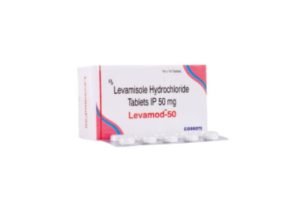
Clindamycin Overview
Clindamycin is a lincosamide antibiotic that inhibits bacterial protein synthesis by binding to the 50S ribosomal subunit. It is bacteriostatic at lower concentrations but can be bactericidal at higher concentrations against certain pathogens. Clindamycin is effective against a variety of gram-positive bacteria and anaerobes, but it has limited activity against gram-negative bacteria.
Brand Names and Formulations
Clindamycin is marketed under various brand names, including:
- Cleocin
- Dalacin C
- Clindacin
- Evoclin (topical foam)
Common formulations and strengths:
- Capsules: 150 mg and 300 mg.
- Injectable solution: 150 mg/mL.
- Topical solutions, gels, and lotions: 1% clindamycin.
- Vaginal cream: 2%.
- Oral suspension: 75 mg/5 mL.
Uses/Indications
Clindamycin is used for treating a wide range of infections, particularly those caused by gram-positive cocci and anaerobes. These include:
- Skin and Soft Tissue Infections:
- Cellulitis, abscesses, impetigo, and acne (topical use).
- Respiratory Tract Infections:
- Pneumonia (especially aspiration pneumonia) and lung abscesses.
- Bone and Joint Infections:
- Osteomyelitis and septic arthritis caused by susceptible organisms, particularly Staphylococcus aureus.
- Gynecological Infections:
- Pelvic inflammatory disease (PID) and bacterial vaginosis (vaginal cream).
- Abdominal Infections:
- Peritonitis, intra-abdominal abscesses, and infections associated with bowel perforation.
- Dental Infections:
- Used for dental abscesses and prophylaxis in penicillin-allergic patients undergoing dental procedures.
- Severe Streptococcal and Staphylococcal Infections:
- Including toxic shock syndrome and necrotizing fasciitis (in combination with other drugs).
- Prophylaxis for Endocarditis:
- In patients with a penicillin allergy undergoing certain surgical or dental procedures.
Dosage
- Adults:
- Oral: 150-450 mg every 6-8 hours.
- IV/IM: 600-1,200 mg/day in divided doses (up to 2,700 mg/day for severe infections).
- Children:
- Oral: 8-25 mg/kg/day, divided into 3 or 4 doses.
- IV/IM: 20-40 mg/kg/day, divided into 3 or 4 doses.
- Topical Application (Acne):
- Apply a thin layer once or twice daily, depending on the formulation.
- Vaginal Cream:
- 5 g once daily (usually at bedtime) for 3 to 7 days.
Side Effects
Common side effects of clindamycin include:
- Gastrointestinal Effects:
- Diarrhea, nausea, vomiting, and abdominal pain. Clostridium difficile-associated diarrhea (CDAD) is a major concern with clindamycin use.
- Hypersensitivity Reactions:
- Rash, pruritus, urticaria, and, in rare cases, anaphylaxis.
- Hematological Effects:
- Neutropenia, thrombocytopenia, and agranulocytosis are rare but possible.
- Hepatotoxicity:
- Elevated liver enzymes and, in rare cases, jaundice or liver damage.
- Local Reactions (with IV/IM use):
- Pain, swelling, or irritation at the injection site.
- Superinfection:
- Prolonged use may lead to fungal or bacterial superinfection, such as candidiasis.
Contraindications
Clindamycin is contraindicated in:
- Hypersensitivity:
- Patients with a known allergy to clindamycin or lincomycin.
- History of Antibiotic-Associated Colitis:
- Especially C. difficile-associated diarrhea.
- Severe Hepatic or Renal Impairment:
- Clindamycin should be used with caution in patients with severe liver or kidney dysfunction.
Drug Interactions
- Neuromuscular Blocking Agents:
- Clindamycin may enhance the effects of neuromuscular blockers, potentially leading to prolonged respiratory depression.
- Erythromycin:
- These two antibiotics should not be used together, as they can antagonize each other’s effects.
- CYP3A4 Inhibitors:
- Clindamycin is metabolized by the liver via the CYP3A4 enzyme, so caution is required when using other CYP3A4 inhibitors or inducers.
- Oral Contraceptives:
- As with many antibiotics, clindamycin can reduce the effectiveness of hormonal contraceptives.
- Warfarin:
- Clindamycin may enhance the anticoagulant effect of warfarin, leading to an increased risk of bleeding.
Special Considerations
- Clostridium difficile-associated Diarrhea (CDAD):
- This is the most serious side effect associated with clindamycin, and it can occur even weeks after stopping treatment. Discontinue use immediately if severe diarrhea develops.
- Liver Function:
- Monitor liver enzymes, especially in patients with pre-existing liver disease or those on long-term therapy.
- Renal Function:
- Clindamycin dose should be adjusted in patients with significant renal impairment.
- Pregnancy and Lactation:
- Clindamycin is classified as Category B for pregnancy, meaning there is no evidence of harm to the fetus in animal studies, but human data is limited. Clindamycin may be used in pregnancy if the potential benefits outweigh the risks. It is excreted in breast milk, so caution is advised when administering to breastfeeding women.
- Topical Use in Acne:
- Prolonged use of topical clindamycin can lead to the development of antibiotic resistance in acne-causing bacteria, making it less effective over time.
Conclusion
Clindamycin is a valuable antibiotic, especially for treating gram-positive bacterial and anaerobic infections, and for use in penicillin-allergic patients. While it is effective in treating a broad spectrum of infections, including skin, soft tissue, and respiratory infections, its use is associated with a high risk of C. difficile-associated diarrhea. Careful monitoring for gastrointestinal side effects and cautious use in patients with a history of colitis are necessary. When used appropriately and with proper monitoring, clindamycin is an important tool in the treatment of various infections.







